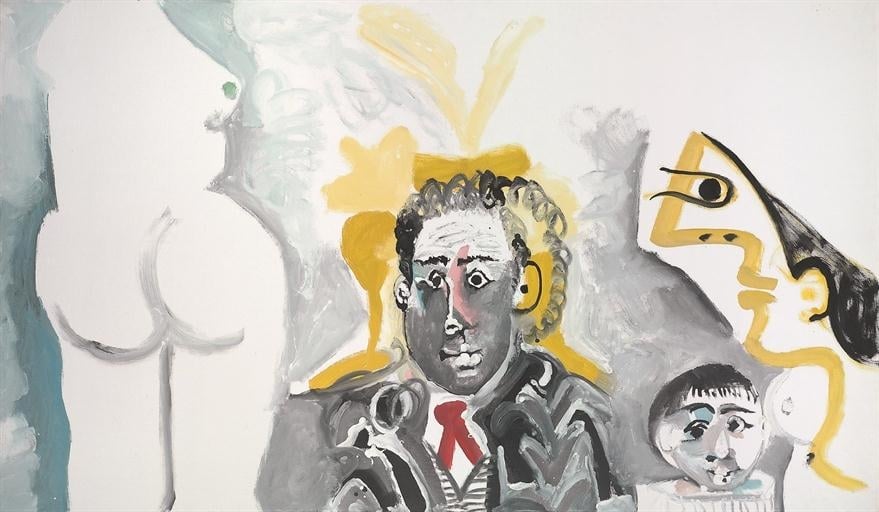Law & Politics
UK Art Dealer Matthew Green Charged in a $9 Million Picasso Money-Laundering Scheme
Green was indicted by US authorities for his alleged role in a money laundering and stock scam.

Green was indicted by US authorities for his alleged role in a money laundering and stock scam.

Eileen Kinsella

US government officials have charged British art dealer Matthew Green with using a pricey Picasso painting to help launder more than $9.2 million (£6.7 million), a representative for the Department of Justice confirmed to artnet News.
Investigators allege that the proposed Picasso sale was connected to a $50 million stock scam. Green, who is the son of prominent London dealer Richard Green and was a co-director of the Richard Green Gallery and, more recently, Mayfair Fine Art, is one of ten people and corporations named in the 29-page indictment. The indictment, which was unsealed by the US Attorney’s office on February 28, focuses on the stock manipulation scheme and violations of US law requiring citizens and taxpayers to report offshore and international holdings to the IRS.
The indictments are the result of work by several undercover FBI agents who recorded their conversations with defendants regarding alleged stock manipulation, money laundering, and falsifying the ID’s of the various offshore account holders.
“As alleged in the indictment, the defendants engaged in an elaborate multi-year scheme to defraud the investing public of millions of dollars through deceit and manipulative stock trading, and then worked to launder the fraudulent proceeds through off-shore bank accounts and the art world, including the proposed purchase of a Picasso painting,” US Attorney Richard P. Donoghue said in a statement.
Two of the other defendants, Beaufort Securities investment manager Peter Kyriacou and his uncle Aristos Aristodemou, suggested to an undercover FBI agent the possibility that he launder the proceeds of his illegal stock manipulation with an art transaction, according to the indictment. Kyriacou and Aristodemou then offered to introduce the agent to Green, and Aristodemou explained that the art trade is “the only market that is unregulated” and advised that art was a profitable investment because of “money laundering,” according to court papers.
The indictment alleges that between March 2014 and February 2018, Kyriacou, Aristodemou, and Beaufort were involved in defrauding investors in various publicly traded companies in the US “by concealing the true ownership” of the companies and “manipulating the price and trading volume in the stocks of those companies.”
Kyriacou, Aristodemou, and Green allegedly proposed that the undercover agent purchase, from Green, Pablo Picasso’s Personnages (1965). Green “provided paperwork for the painting’s purchase. The money laundering scheme was halted prior to the transfer of ownership of the painting,” according to a statement from the Justice Department.
A Picasso painting matching that title and date was last offered publicly at an Impressionist and Modern evening sale at Christie’s London in 2010, according to the artnet Price Database. At the time it carried an estimate of £3 million to £5 million ($4 million to $7 million) and failed to sell.
Past owners of the painting, as listed in the provenance, or history of ownership, include a Paris gallery, a private collection in Switzerland, a private collection in Sweden, a Berlin gallery, and an unknown buyer who acquired it in 2000. It is not clear when Green acquired the painting or if he was the actual owner or was offering to sell it on behalf of a consignor. A source familiar with the work told artnet News that the painting is currently on loan to a museum in Denmark.
According to the indictment, on or about February 5, the agent met with Kyriacou, Aristodemou, and Green in London. During the meeting the undercover agent “once again explained his involvement in stock manipulation deals.” The defendants proposed that, after buying and maintaining ownership of the painting for an unspecified period of time, Green would arrange for the resale of the Picasso and then transfer proceeds back to the undercover agent through a bank in the US.
During the meeting, Green said that, in part, “it was important for him to make more than a five percent profit on the transaction so that he would not be asked why he was ‘in the money laundering business’,” according to the indictment. He further stated that he would address an invoice for the painting to a company that the undercover agent specified.